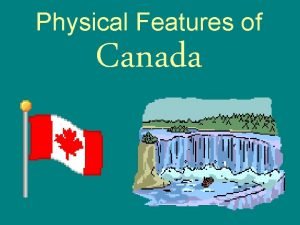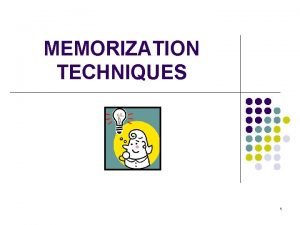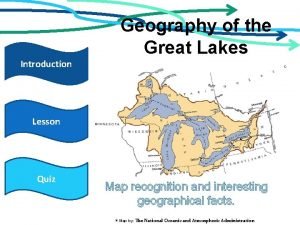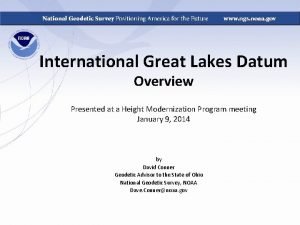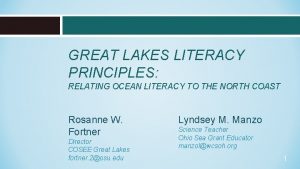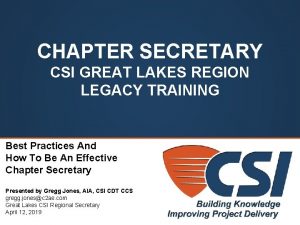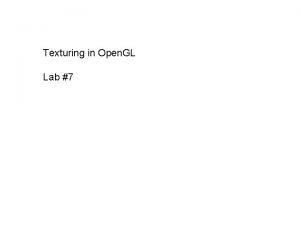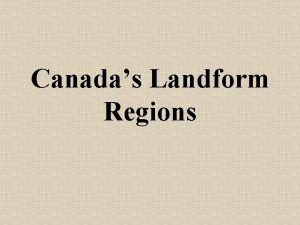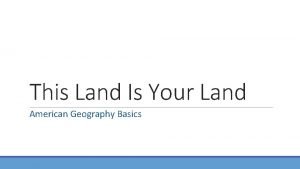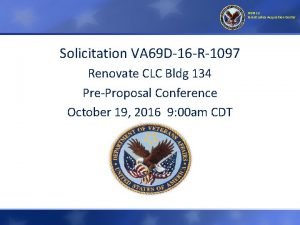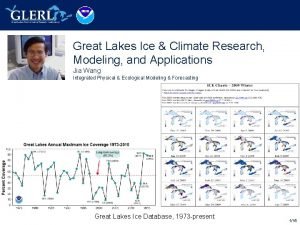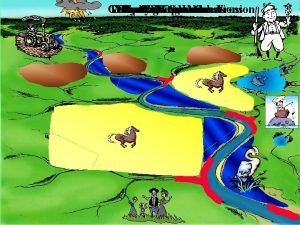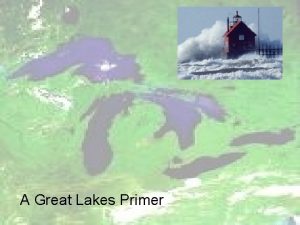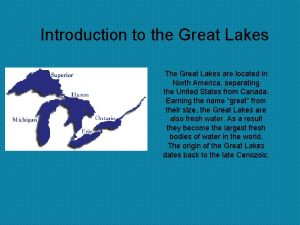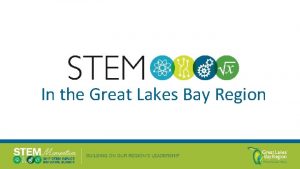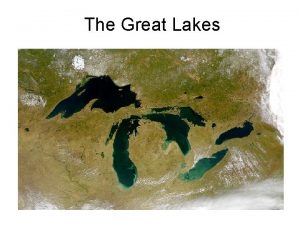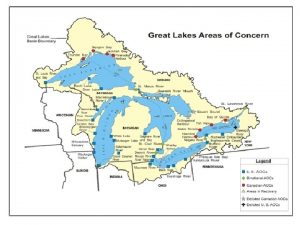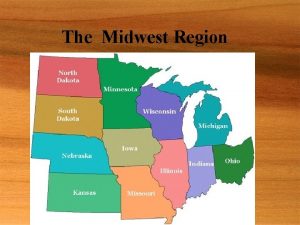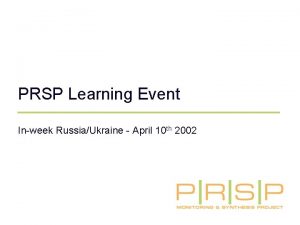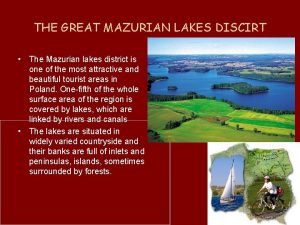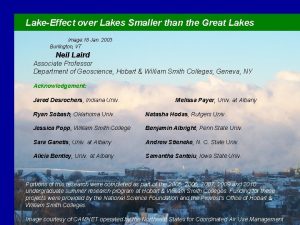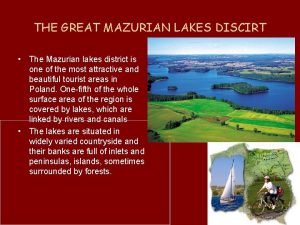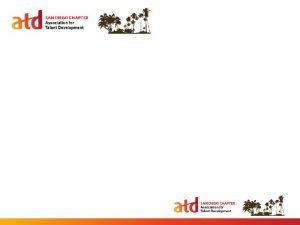AGHD PRSP Learning Event Africa Great Lakes and
















- Slides: 16

AGHD PRSP Learning Event Africa Great Lakes and Horn Department January 2002

PRSPs in Practice § Origins of the PRSP idea § Core principles § Phasing & key elements of a PRSP § What’s new § Links with other instruments/processes § Emerging Experience § Relevance in conflict & post-conflict countries 2

Origins of the PRSP Idea § Poor record on poverty reduction in 1990 s § Findings on aid effectiveness (limits of projects, undermining of govt. systems & capacity…) § Limits of conventional conditionality § Justification for big increase in multilateral funding for debt relief (HIPC II) 3

Core PRSP Principles Sept. 1999 the PRSP replaced the PFP (Policy Framework Paper) as the governing contract between the IMF/World Bank & client countries. Central to it are five principles: § Country-led/owned based on participation § Outcome oriented § Comprehensive – analysis of poverty § Medium to long term perspective § Donor partnership under government leadership 4

PRSP Schedule & Key Elements Preparation Status Report I-PRSP HIPC(II) Decision Point 5 9 -24 months 1 st Annual Progress Report PRSP (I) HIPC(II) Completion Point 2 nd Annual Progress Report etc. . 3 years PRSP (II)

Preparation Status Report I-PRSP 1 st Annual 2 nd Annual Progress Report etc…. PRSP (I) PRSP elements: 9 -24 months § Poverty analysis § Goals/targets § Prioritised policy actions HIPC(II) § Med-term budget fw Decision § Financing plan Point § External assistance § Participatory process 3 years PRSP (II)

What’s New? § Linking strategy to the fiscal & macro framework § Reducing the disconnect between policy & results (structuring actions viz. impact on poverty) § Opening up strategy process to broadbasedparticipation § Opportunities for new ways of delivering aid(pooled funding of general budget, joint appraisal, common performance assessment) 7

Links with other instruments PRGF (replaces ESAF) I-PRSP HIPC(II) Decision Point 8 PRGF perf. criteria/benchmarks (3 years) PRSP (I) HIPC triggers Goals & targets (5 -10 years) HIPC(II) Completion Point PRSP (II)

Sector strategies & priorities I-PRSP HIPC(II) Decision Point PRSP elements: (I) § Goals/targets § Prioritised policy actions § Med-term budget fw MTEF Inter-sectoral priorities Resource constraints Expenditure monitoring PRSP (II)

Cont. . . § Link with PRSC more complex. Designed to support PRSP implementation § PRSC structured as a series of annual singletranche programmatic adjustment credits with clear performance benchmarks linked to the PRSP (initially a replacement for SACs) 10

Cont. . . § Bank has put in place 5 ‘due diligence’ tests. § Full PRSP § Social/structural diagnostic or review (SSR) § PER, CFAA § Poverty & social impact analysis § Environmental assessment § Only 3 PRSCs in place so far – Uganda, Vietnam (DFID co-financing both) & Burkina Faso, 2 or 3 in the pipeline 11

Emerging Experience § ‘Upgrading’ of poverty policy – Mo. Fs engaged § Achieved at some cost to senitments to national ownership but IFIs getting better at stepping back § PRSP process & document heavily influenced by density of previous reform effort(s) § Synergy with MTEFs especially important § Value-added: clear policy vision linked to results, increased policy space for CSOs/private sector etc. 12

Cont. . . § Participatory processes generally limited to consultation, depth of understanding limited § Ambitious targets, weak prioritisation & costing of policy actions § Disconnect/lags between related reform efforts – civil service reform, local govt. reforms - & PRSP § M&E still the poor relative 13

Relevance in Conflict Settings § No straightforward picture § Rwanda – opportunity of the PRSP has been seized upon as an input to wider national reconciliation § Sierra Leone – IFIs have re-engaged an I-PRSP produced, but major concerns about the Govt. ownership, capability & CSOs capacity to respond to the PRSP timetable 14

Key Questions § How & on what basis is govt’s commitment to poverty reduction being judged? § Are decisions about when IFIs/donors re-engage based on an analysis of the political economy of conflict? § What are the minimum requirements in terms of a functioning budget/administrative system for a PRSP process to be viable? 15

Cont. . . § How does any proposed consultation process take account of the dynamics of conflict? § How do other processes of peace & reconciliation relate to the PRSP? § To what extent are the analysis of poverty and proposed policy actions informed by conflict/security issues? Does this imply different assessment criteria? 16
 Prsp
Prsp Great lakes scrip center
Great lakes scrip center Great lakes depth comparison
Great lakes depth comparison Physical features in canada
Physical features in canada Acronoyms
Acronoyms Brenntag leduc
Brenntag leduc Great lakes quiz
Great lakes quiz International great lakes datum
International great lakes datum Great lakes literacy
Great lakes literacy Csi great lakes region
Csi great lakes region Great lakes labs
Great lakes labs Western cordillera landform region
Western cordillera landform region Great lakes on us map
Great lakes on us map 5 great lakes
5 great lakes The great lakes
The great lakes Arsnsl
Arsnsl Compound probability
Compound probability



